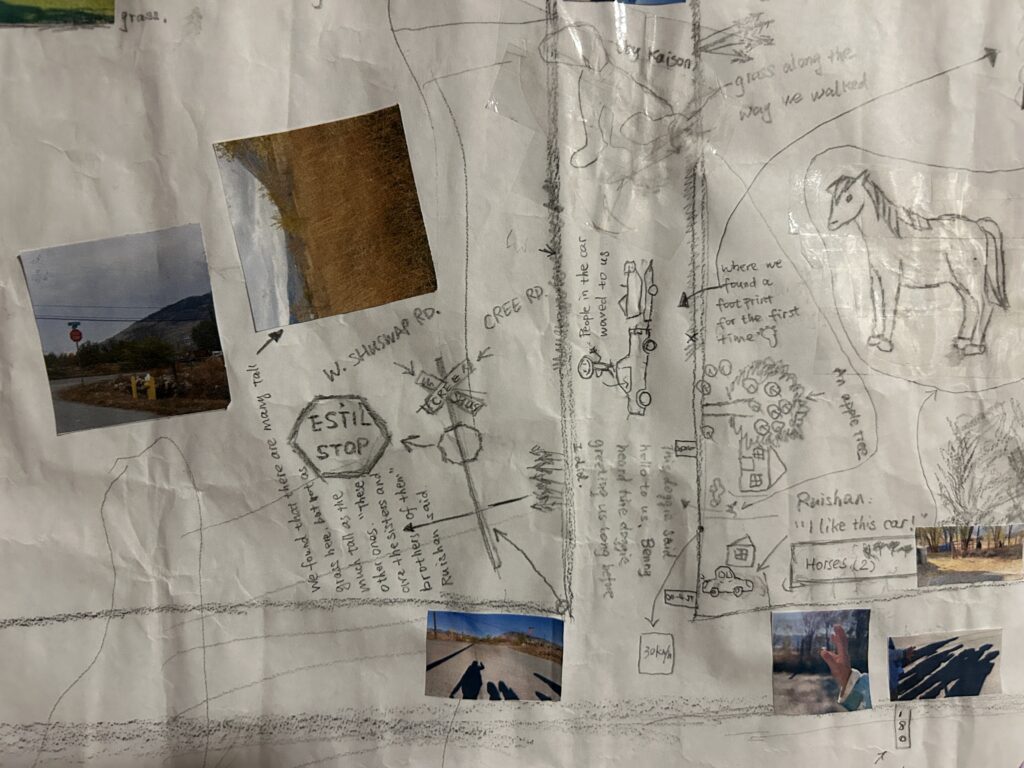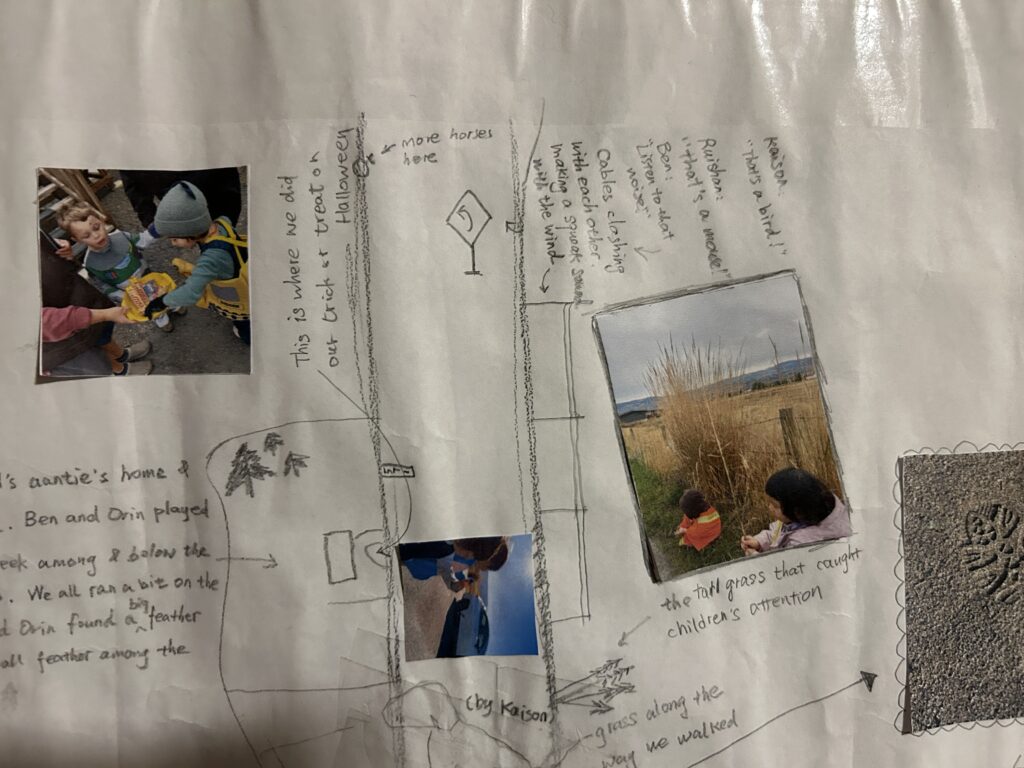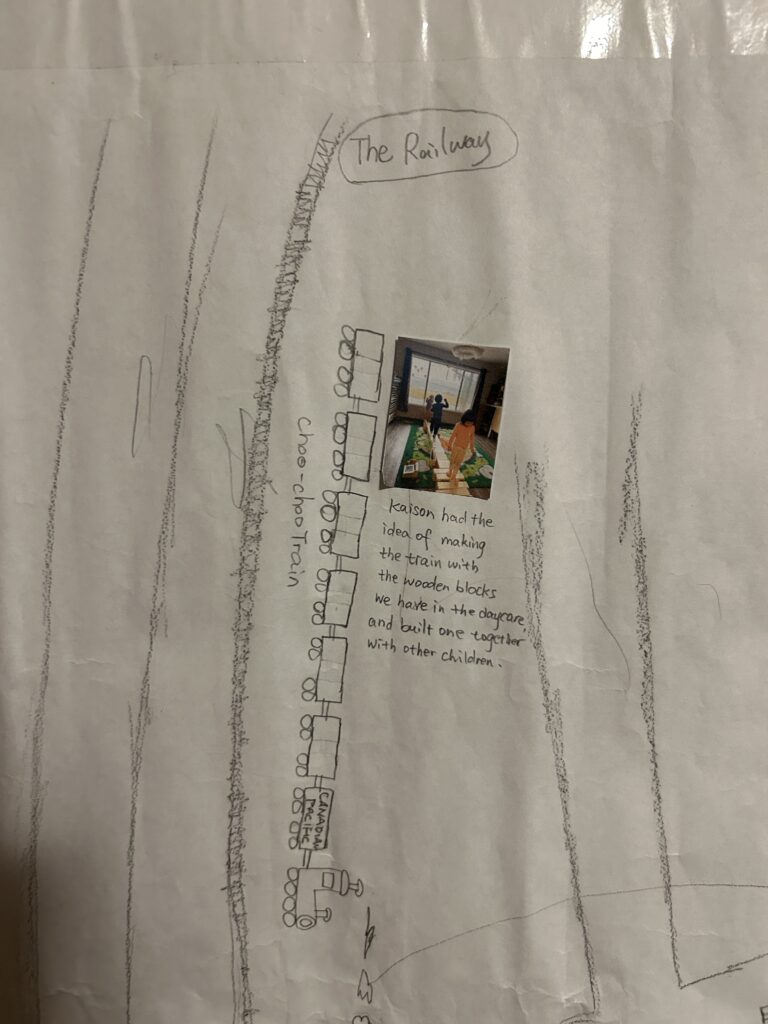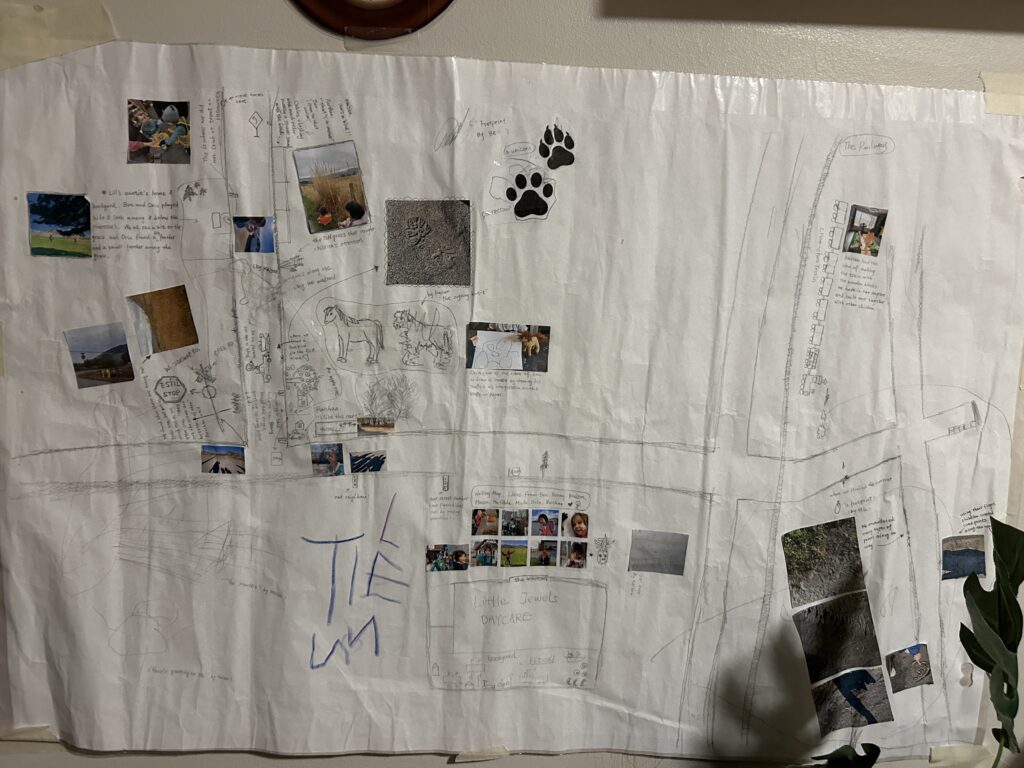This semester, with the suggestion of my practicum instructor and some research, I worked with children to create a Walking Map to make the project come alive in the room. I used a large piece of paper and started mapping out the main roads around us. I invited the children to join me and think about where we should start, and that was how we added our daycare, our backyard, the many things in our backyard, and the tree in our front yard; children wanted themselves on the map, so I put their names and photos on the map. Every time after the walk, we would come back to this map and work on things that we encountered along the way: the cars, the signs, the letters/numbers on the sign, the train, the letters on the train, the dogs, the horses, the houses, the grass, the trees, the cables etc.
I put the map on the table so that different children could work on it at the same time. Usually, children suggested what to add and how to add it. Sometimes, we decided to draw on it, while other times, I proposed putting the picture I took on it. We didn’t use many materials, mostly pencils and occasionally crayons, as pencils could bring fine lines that require more attention. Children often worked on the same thing, and in order to give them more space for their ideas, I gave them our Idea Paper to draw with. (The Idea Paper was what I brought to the daycare during the same period of time, not only for this project of walking and mapping but for ideas in general). I would then take a picture of their ideas, print them out on a smaller scale, and paste them onto the map. I used the art room as the main space for such works, but sometimes, I also did it in the main activity room, depending on the day’s flow. The map was usually pasted onto the art room wall, but it was also easy to take it off, so I would take it down for our work and then paste it back after we were done. The presence of a collective work in the room serves as a reflection of our shared memories and an invitation to revisit and build upon our experiences. It became a living documentation of our times together, filled with observations, conversations, ideas, and wonderment among children.
By the end of my practicum, I brought a chest strap to our walk to mount my phone so I could record the walk. After the walk, I used my laptop to play the video, and together, we made a revisit in a more visual way. We noticed things we had overlooked on the walk. For example, there was a dog sitting in the backseat of a car that passed by; from the angle of the children on the walk, they couldn’t see it, but my camera was able to capture that moment. The video, in which the children saw themselves as an active part of the whole walk, gave me another perspective on how to bring more attention for children to notice and feel their connection with other people and the world.



